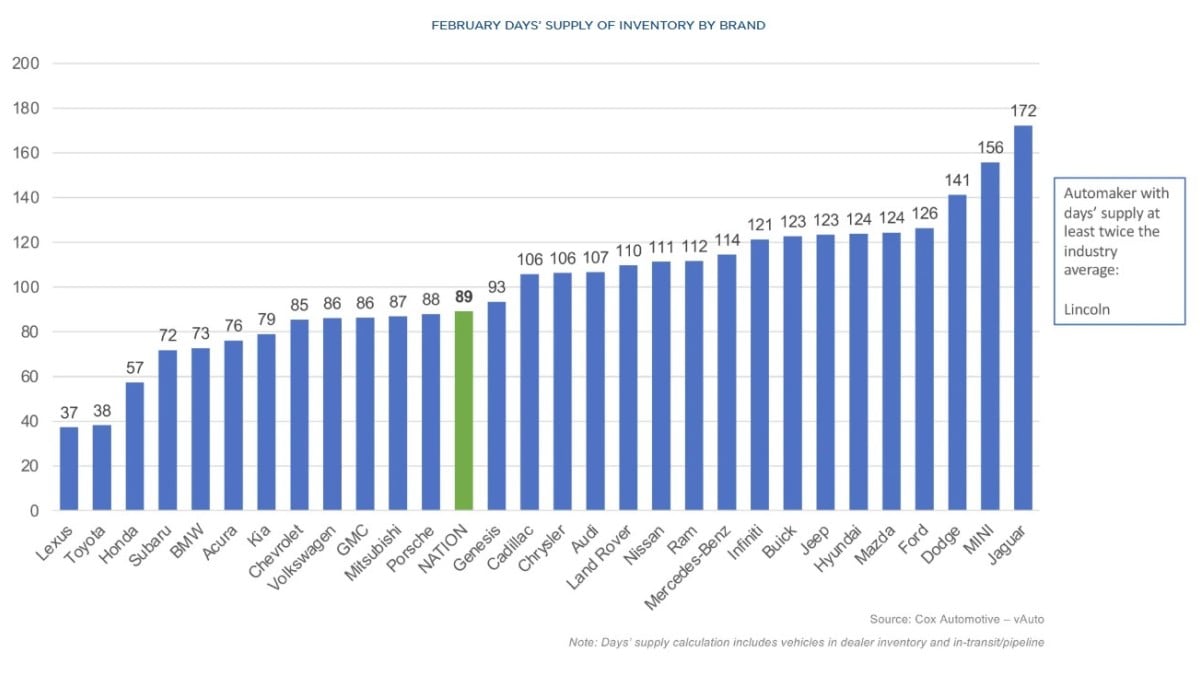Last week, President Trump announced two rounds of tariffs set to radically reshape car prices in America. That may trigger a rush of car shopping as Americans look to buy at pre-tariff prices.
Starting April 3, Trump says, the U.S. will impose a 25% tariff on all new cars entering the country. Cars built in the U.S. will be subject to a tariff that will raise their prices, too. The exact increase will differ for each model.
Over the weekend, car dealers started preparing for a spike in car shoppers. Should you join in? We’ll explore how to decide.
How the Tariffs Will Affect Prices
Nearly half the cars sold in the U.S. are built outside of it.
Those built in Asia or Europe will see their prices rise by 25%.
Automakers build many cars for the U.S. market in Canada or Mexico. Under the U.S.-Canada-Mexico Agreement (USMCA), a pact Trump negotiated during his first term, those will be treated like cars built in the U.S.
Cars built in the U.S., Canada, or Mexico will also see their prices rise, but the specific increase will differ for each based on the percentage of non-American parts automakers use.
A separate 25% tariff will apply to car parts. That tariff will begin no later than May 3, though the exact date is uncertain because the Commerce Department needs time to write the rules explaining how the government will enforce it.
There are no American cars. Every car built in the U.S. includes many parts from other countries. Even the Tesla Model 3, this year’s holder of the “most American car” title, gets much of its interior from China.
So, no car will be exempt from price increases. The effect could be worst at the inexpensive end of the market, where automakers could discover it’s no longer cost-effective to import inexpensive cars for sale to Americans.
It’s too early to quantify, but anecdotal evidence suggests that the news could send Americans car shopping.
“Sales managers told CNN that they have been fielding more inquiries, though there hasn’t been a dramatic jump in sales just yet,” the network reports. The New York Times adds, “Many dealers did not see a noticeable increase in buyers on Saturday,” but a handful reported unusually brisk sales weekends.
“Automakers are speeding up shipments of new vehicles,” Bloomberg notes. “Dealers are huddling with their rivals to exchange ideas on how best to cope.”
Cox Automotive Senior Economist Charlie Chesbrough explains, “I expect we’ll see relatively strong sales activity for a month or two, but prices will rise, and sales will slow noticeably before the end of” the second quarter.
Cox Automotive owns Kelley Blue Book.
Thinking About It? Learn About Car Inventory
Prices will not increase overnight when tariffs kick in. They will rise gradually, hitting each automaker at a different rate. Why? Because each has a different stockpile of cars already in the country at pre-tariff prices.
At the end of February, Toyota and Lexus had the industry’s lowest inventories — just 38 and 37 days’ worth, respectively. Rivals like Ford and Dodge had as much as four months’ worth in reserve.


A car price is always the result of a negotiation. Dealers likely won’t try to charge post-tariff prices for cars they bought at pre-tariff prices. But they will need to raise prices on the cars they have in inventory now because, as they sell current inventory, they’ll have to pay higher costs to replace it.
Automakers and dealers “will be pulling back on incentives immediately as the rush to sell existing inventory declines,” Chesbrough says. Each car on a dealer’s lot is realistically worth more to the dealer now, he explains, “since its replacement cost will be much higher. And, future supply availability may be vulnerable, so motivation to sell may be changing as well, and it is moving away from the buyer’s favor.”
Watch the Fair Purchase Price
We update prices every Thursday night to help shoppers go into the weekend with up-to-date knowledge of what others in their area are paying.
Timing your purchase will be tricky. Your most useful tool will likely be the Kelley Blue Book Fair Purchase Price. Fair Purchase Price reflects the price consumers are typically paying for each vehicle. The Fair Purchase Price is regionalized based on actual new-vehicle transactions collected across the country and regularly adjusted as market conditions change.
Tracking the Fair Purchase Price of a vehicle you’re interested in will help you know when inventory declines and prices start to rise.
Owning Your Existing Car Will Get More Expensive
The easiest way to save money on a new car is not to buy one. In many cases, keeping your existing car is far less expensive than buying a new one.
However, drivers should know that costs are likely to rise somewhat, even for those who stay out of the market.
Skyler Chadwick, director of product consulting at Cox Automotive, tells CNN, “Tariffs will most certainly cause higher costs in parts, which can constitute up to 40% or more of a repair bill. The parts department in any dealership or repair shop is a United Nations of parts, sourced from all over the world.”
The Associated Press notes that higher repair costs will also “hike insurance costs farther down the road.”
That cost could come later. “Bob Passmore, department vice president of personal lines at the American Property Casualty Insurance Association, expects consumers to see an impact on their insurance bill in 12 to 18 months at a minimum. That’s because increased prices have to hit claims costs, then be implemented after new rates are filed and approved.”

